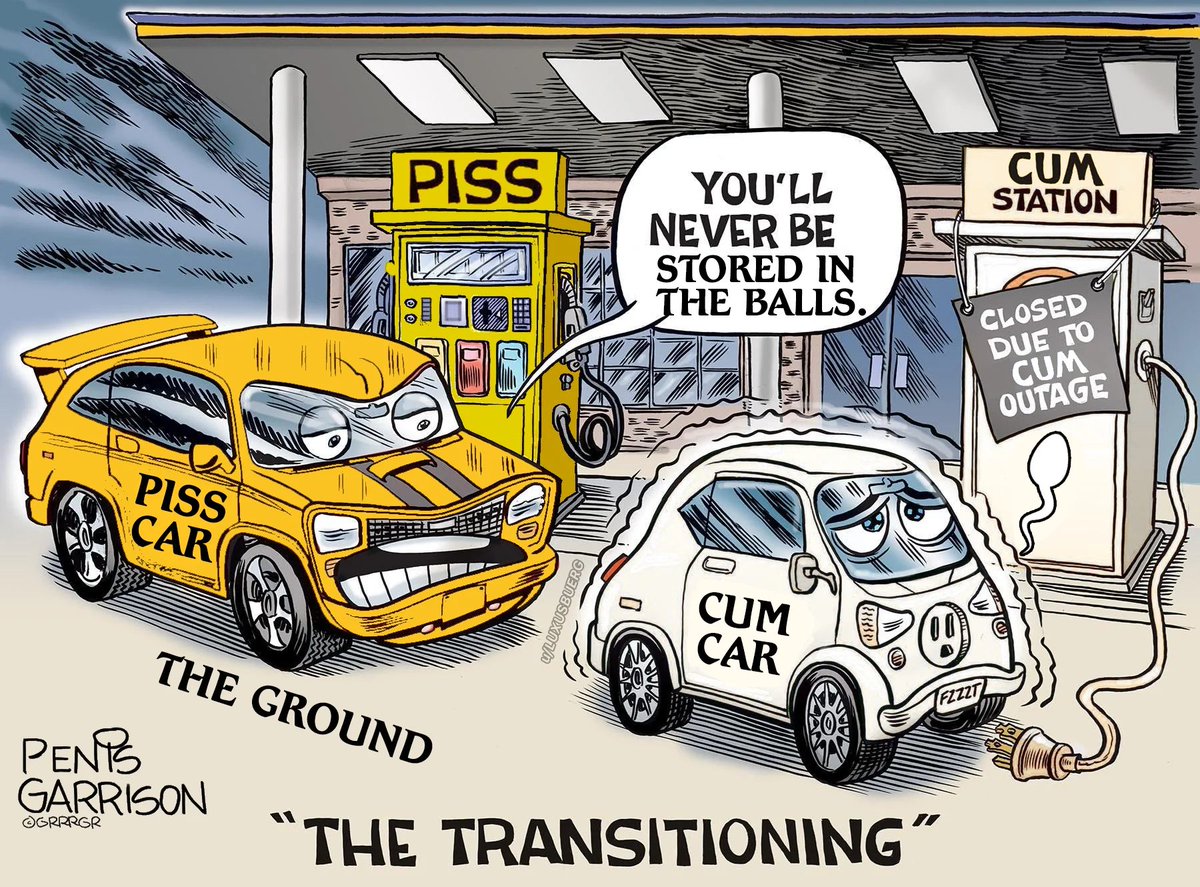look, if all of Parliament is extremest, then comparatively none of them are
no, i'm sure that people were using it in the comments
someone here has to know the name for the emoji of Saturn eating his son. I know i've seen it in the megathreads
oh fuck it's been immortalized
i went to that url. it redirects to a blogspot that hasn't been updated since 2014
pretty funny stuff. having a hard time telling if it's intentional satire or not
Some Cycling Terms
In case you are new to The War on Cycling we may use some terms here that confuse you. I just wanted to take some time to clear those up.
(click)
Cyclist: Let it be clear that when we say “cyclist” on this site we specifically mean the spandex wearing douche bag type.
Cager: A cager is a slur that cyclists use against automobile drivers. It’s somewhat ironic, since pretty much all cyclists also driver cars. Much like the F-word to gay people or the N-word to black people, cager is also a term that non-cyclists use in reference to each other, in order to rob the word of its power. None-the-less you will often hear cyclists use the slur freely and without shame.
Critical Mass (aka Critical Ass): Critical Mass is a semi-organized cycling event. Ideally it is to be held in most metro areas on the last Friday of the month, but it can really be any time or place. Any time a group of douche bag cyclists with nothing better to do decide to get in huge groups and ride around town slowing down traffic, it can be considered Critical Mass. Some cyclists claim it is merely a chance for social interaction and exercise, however many will admit that is in fact a means of protest and intimidation against non-cyclists. Whatever the reason, it’s really freaking annoying. It is sometimes referred to as Critical Ass because the participants are usually gigantic assholes with little to live for other than causing more traffic and mayhem.
Chain Gang: This is that long line of cyclists riding single file, making it almost impossible to pass them. No shit, cyclists claim this is a training tool, no doubt preparing their fat asses for the Tour de Bacon they have coming up next month. Cyclists frequently use this formation to run red lights and 4 way stops.
Cycling Myths
It seems some people out there think cyclists are annoying, but harmless. Let me assure you, nothing could be further from the truth. Cyclists are dangerous, to themselves, and others. Let’s clear up some of the myths on cyclists.
(click)
Myth#1: Cyclists want to share the road.
Fact: Cyclists want to inconvenience drivers for the glory of their own egos.
Most cyclists are sad and lonely people who have failed at life. Their careers (if you can call bagging groceries a career) are going nowhere, their families are ashamed of them, and other than getting together with other pathetic losers to ride bikes, they have no personal life to speak of.
So what is a sad, pathetic loner to do? Well besides offing themselves, they like to dress up in skin tight spandex and ride bikes around town tying up traffic. Keeping people in cars from getting where they need to go boost their self-esteem much like the schoolyard bully does by hassling other kids for their lunch money. This feeling of importance, this rush of knowing they are forcing the world to revolve around them, it is the only thing that keeps most of these people from swallowing the barrel of a revolver.
Cyclists have no desire to share the road with motorists in some sort of utopia vehicular society where man powered and gas powered transportation devices live in peace and harmony. Quite the opposite actually. Their goal is to create an environment of stress and confusion on the roadways to boost their frail and pitiful egos.
Myth #2: Cyclists want to live by the same rules of the road as motor vehicles.
Fact: When it suits them cyclists want the same rules for both, when it is inconvenient for them they want to claim “Well I am just on a bike.”
Cyclists are constantly screaming for equality on the road. They want nothing of the sort. When a cyclists is riding down a major US Highway with a 55 MPH speed limit at 20 MPH, that is when they want everyone to view them as an equal, with the same right to the road. When they come to a red light or a four-way stop, well at that point, “I am just a bike.” becomes the new law of the road, and they run it at their convenience.
Cyclists have no desire to live by the same laws as motorists. They want equal protection when it suits them. And when it doesn’t? Well then they are “just a bike”. Excuse them while they run a red-light.
OK, this one may have a glimmer of truth to it. As a cyclist, other cyclists can be kinda embarrassing sometimes.
Myth #3: It is a great tragedy when a cyclist is killed by a motorist.
Fact: Riding a bike on major highways with speed limits of up to 55MPH with hundreds of two ton vehicles is about as smart as playing Russian Roulette.
A lot of people gamble with their lives, soldiers, police officers, firemen for instance. When these people lose their lives it is a great tragedy because they lost their lives while pursuing noble efforts, catching criminals, saving lives, protecting freedoms. Getting killed because you thought it would be “cool” to tie up traffic during rush hour isn’t noble. Losing one’s life to stupidity isn’t a tragedy.
We at Spare the Road do not want to belittle anyone who has lost a loved one to this situation. However, as mentioned in Myth #1 most cyclists have no one who cares for them. If you are in that minority though we are sorry, sorry that your family member or friend was so selfish they cared more about being a jackass on public streets than being there for you. When some idiot on a bike gets hit by a car, it’s not a tragedy; the tragedy is his kids are going to have to grow up fatherless because their dad thought it would be awesome to “stick it to cagers” by riding his bike on busy streets.
Myth #4: It is illegal for cyclists to ride their bikes on the sidewalk.
Fact: It is also illegal for them to run red-lights, but that has never stopped a cyclist before.
This goes back to Myth#2. Cyclists are quick to point out it is against the law to ride their bikes on the sidewalk as the reason they have to pedal in the streets. Point out that it’s also against the law for them to ride in between two rows of cars waiting at a red-light, and they will probably key your car.
Myth #5: If we just built more bike lanes then we’d all live happily ever after.
Fact: Cyclists avoid bike lanes at all times.
Cyclists like to complain about the lack of bike lanes. But much like they tie up traffic as self service to their egos, they also like wasting taxpayer money for the same reason. Cyclists have no desire to use bike lanes. Why not? See Myth #1 for that answer.
Usually most of the support of bike lanes comes from motorists who want to get these idiots out of their way. But build a bike lane and cyclists will just move to other streets without them.
All sin starts when you treat people as things.
who needs pinned posts when you have Sort Type: Active
please consider information security! Take care what you post.
Something should only be news to your internet friends when it's olds to you and your org. And then give it another half-year just to be safe. If you're doing an internet fundraiser, yesterdays goal in the headline can still serve today's. Maybe I'm paranoid. But really, sleep on posts. Sleep on them a lot
like grouping regions of phase space, generation labels become meaningless at the granular level
if we're interpreting normal to mean something like 'average', then the third count is incorrect
...
The number of vessels waiting to cross the Panama Canal has reached 154, and slots for carriers to book passage are being reduced in an effort to manage congestion caused by ongoing drought conditions that have roiled the major shipping gateway since the spring. The current wait time to cross the canal is now around 21 days.
The Panama Canal is a critical trade link for U.S. shippers heading to Gulf and East Coast ports. The U.S. is the largest user of the Panama Canal, with total U.S. commodity export and import containers representing about 73% of Panama Canal traffic. Forty percent of all U.S. container traffic travels through the canal every year, about $270 billion in cargo.
The massive pileup is a result of water conservation measures the Panama Canal Authority deployed in late July due to drought. The PCA has temporarily lowered the availability of booking slots from August 8-August 21 for Panamax vessels, which are the largest vessels that can cross the canal. These vessels can carry 4,500 twenty-foot equivalent units (TEUs), which are the dimensions of a container. The number of pre-booking slots was reduced to 14 daily from 23.
This latest reduction in bookings is on the heels of the PCA reducing the number of vessels allowed to go through the canal in a day. [links to CNBC article from Jun 24th 2023: https://web.archive.org/web/20230810211701/https://www.cnbc.com/2023/06/24/us-trade-dominates-panama-canal-traffic-a-drought-is-threatening-it.html] Starting on July 30, 2023, the daily transit capacity of the Panama Canal was adjusted to an average of 32 vessels per day (10 vessels in the newer Neopanamax locks, which serve the larger vessels, and 22 vessels in the older Panamax locks). Before the water conservation measures, transits were 34 to 36 a day.
When the daily capacity is reduced, ships lacking reservations are compelled to wait in line. The Panama Canal Authority tells CNBC 38% of ships waiting have reservations. The remaining 62% of ships do not, which means they have to wait for the vessels with reservations to proceed across the canal.
A temporary measure was put in place where five ships a day on the Panamax locks can traverse the canal on a first come first served basis. The measure is designed to help reduce waiting times but backlog remains.
The PCA told CNBC that the last time a backlog of vessels like the current situation was in 2022, when the world of shipping was impacted by residual delays from the pandemic and the conflict between Ukraine and Russia.
Additional lower water level restrictions imposed by the PCA in July also require vessels to be 40% lighter, impacting vessels that were in transit when the requirements were implemented. The Ever Max was forced to unload 1,400 TEUs at the Port of Balboa in order to meet the requirements and gain passage. The vessel is currently anchored at the Port of Savannah.
“Those containers left may need another vessel to complete the journey,” said Captain Adil Ashiq, head of North America for MarineTraffic. “This is going to get worse before it gets better,” he said.
A canal lock uses 50 million gallons of water when a single vessel traverses the canal. Water levels in Gatun Lake, which feeds the canal, are at a four-year low.
Ricaurte Vásquez Morales, administrator of the Panama Canal, said that considering the changing circumstances, the canal is maintaining an open line of communication to keep customers informed about booking slot availability. “Through regular updates, transparent dialogue, and close collaboration with shipping lines and stakeholders, we strive to manage expectations and provide real-time information that enables our customers to make informed decisions,” he said.
Ashiq explained that vessels have to wait longer to transit the canal or ocean carriers make a business decision to take alternative routes, which add time and fuel costs to the journey. Shippers using multiple vessels to move their freight adds to freight costs, and longer lead times to secure bookings. Ultimately, he said, these costs may end up being passed down to businesses and consumers.
Recent data released by supply chain intelligence firm Descartes shows the East Coast ports continue to be the preference for U.S. shippers. The top five West Coast ports showed a decrease of 4.1% in July, and the top East and Gulf Coast ports processed an increase of 4.1% during the same timeframe.
“Now is not the time to further stress supply chains that are still straining under ongoing logistical pressures,” said Stephen Lamar, president and CEO of the American Apparel & Footwear Association. He said surcharges and vessel restrictions will likely mean higher clothing and shoe prices for U.S. consumers this holiday season.
 Oh dear, price go up! How sad, certainly not my
Oh dear, price go up! How sad, certainly not my choice fault.
...
Alan Baer, CEO of logistics company OL USA, told CNBC that shippers may have to start looking at other routes.
“With the increasing difficulty of reaching the U.S. East Coast via the Panama Canal, importers may be looking at vessels transiting the Suez,” Baer said. He added that this can be an effective solution for freight originating in the ASEAN region and some Southern China origins. However, for Northern China and North Asia, deviation via the Suez can add seven to 14 days of additional transit time.
Energy sector diversions are already happening
Diversions are already happening in the energy sector. The mounting delays have clean tankers, which carry refined petroleum products, avoiding the canal, shifting their preference to book routes to the Atlantic Basin, according to S&P Global. Data from its Commodities at Sea unit shows that in the combined June to July period, U.S. Gulf Coast clean petroleum product exports using the canal and traveling to the West Coast of South America slowed by 82% year over year. Exports in July, specifically, were down 12% year over year.
Cheniere Energy announced in July that it would avoid the Panama Canal to ship LNG because of the wait times. The canal is the quickest route for the LNG market to reach Asia. Coal traffic is also being impacted and making adjustments. India is a big importer of U.S. coal and vessels carrying the commodity also use the Panama Canal.
Correction: This story has been updated to reflect the correct volume in traffic for the top five West Coast ports and the top East and Gulf Coast ports during the same time frame. [lol]
equal parts :sicko-yes: and :oh-shit:
you and the author of the post are in agreement
The diet and feeding style remain even more mysterious, since no skull material of this animal is currently known.
So those illustrations are, like, super-conjecture especially the head
wasn't the movie set in the early 90s?
TVs should not be smart. Smart is unpredictable. TVs should be OFF, or ON, and they should always display whatever input they were last left on, even if it's static noise
talking with a colleague about Thank You for Smoking and they say
"Yeah, but that was back in the eighties. It was basically the wild west, you could get away with anything. That kind of thing doesn't happen anymore."

YouTube Video
Click to view this content.


